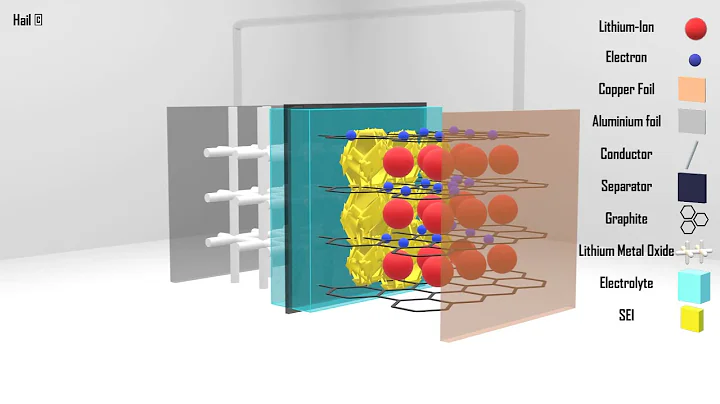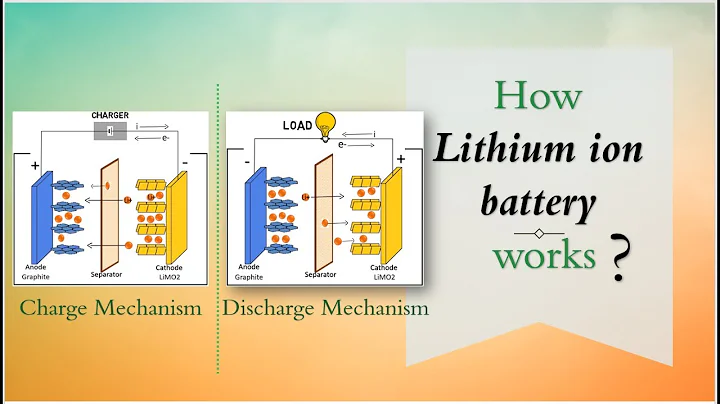Solid-state zinc-air batteries (ZABs) are considered to be one of the most promising flexible energy storage systems for wearable electronic devices in addition to lithium-ion batteries . Unfortunately, continued water loss from the electrolyte and corrosion of the zinc electrodes severely limits the service life of ZABs. Recently, researchers prepared a "water-in-salt" (WIS) non-alkaline gel polymer electrolyte with a double network ( polyacrylic acid and cellulose nanofibers ) in one step through free radical polymerization initiated by UV light. WIS electrolyte is realized through the coordination between zinc triflate and acetamide , and has extraordinary thermodynamic stability. Thanks to the strong interaction between water and other components, electrolyte can capture moisture from the ambient air and achieve a dynamic balance of adsorption and desorption. As a result, the flexible ZAB achieves an extremely long cycle time of 1300 hours. In addition, gel polymer electrolytes have excellent adhesion properties and can be tightly combined with electrodes without the need for fixation measures. The fabricated sandwich- and cable-type cells accommodate complex deformations without sacrificing electrochemical performance, demonstrating great potential for practical wearable applications.

Figure 1 a) Schematic diagram of cactus absorbing water from ambient air, b) Synthesis method of WIS-PAA/CNF, c) Dual network structure, d) Water absorption mechanism. e) Non-covalent interaction diagram of pure C2H5NO and the coordination interaction between C2H5NO and Zn(OTF)2.

Figure 5 a) Schematic diagram of cable type ZAB. b) OCV curve of cable type ZAB. c) Charge and discharge curves of cable-type ZAB under various deformations. d) Stability of sandwich-type ZAB at different bending angles. ZAB series power supply based on WIS-PAA/CNF e) electronic watch, f) temperature and humidity sensor.
In summary, electrolyte water loss and zinc electrode corrosion greatly limit the actual service life of ZABs. Inspired by the survival strategy of desert plants, WIS non-alkaline gel polymer electrolytes based on the coordination of Zn(OTF)2 and C2H5NO have been proven to have excellent thermodynamic stability. It achieves the dynamic balance of adsorption and desorption of water molecules in the natural environment. The run time of WIS-PAA/CNF-based ZAB is increased by an order of magnitude compared to most conventional gel polymer electrolytes. Furthermore, the excellent adhesion properties of the gel polymer electrolyte enable it to tightly bond with the positive and negative electrodes, thereby eliminating the fixation measures required for most solid-state ZABs. Sandwich type and cable type ZAB based on WIS-PAA/CNF also show excellent flexibility and practicality. This work provides a new strategy for developing gel polymer electrolytes with high stability, providing intuitive insights into the adsorption and desorption behavior of water as well as the adhesion properties of the electrolyte. It is also expected to promote new progress in academic research and industrial applications of solid-state ZABs.

A related paper titled "Water-in-Salt" Nonalkaline Gel Polymer Electrolytes Enable Flexible Zinc-Air Batteries with Ultra-Long Operating Time was published in "Advanced Functional Materials". The corresponding authors are Researcher Lv Pengfei of Jiangnan University, Professor Wei Qifu, and Minjiang UniversityAssociate Professor Ke Huizhen.
Reference:
doi.org/10.1002/adfm.202203204





















